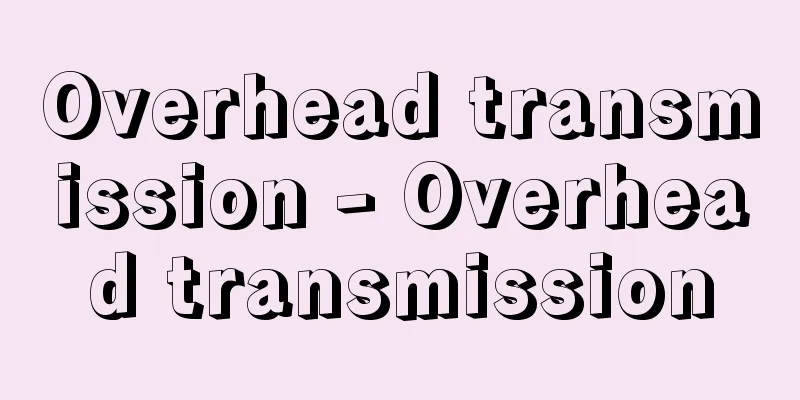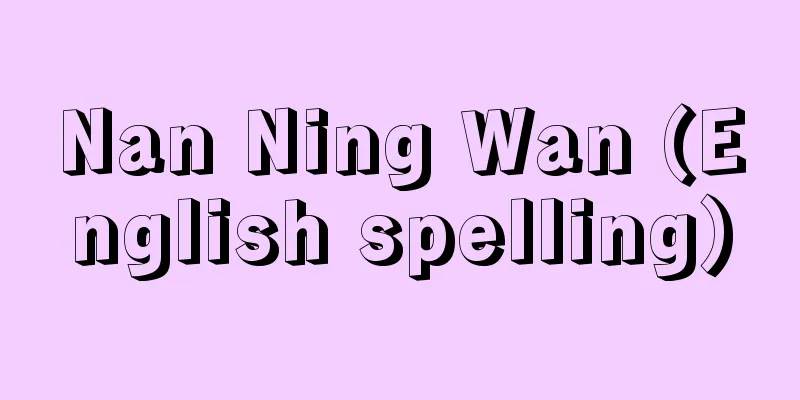Stimulants - Psychostimulants

|
"Stimulants" is a legal term in Japan. Stimulants are phenylaminopropane (amphetamine) and phenylmethylaminopropane (methamphetamine) as defined in Article 2 of the Stimulants Control Law. In addition, pharmaceuticals designated as stimulant raw materials by government ordinance, such as ephedrine and methylephedrine, which have a bronchodilating effect, and selergine and deprenyl, which are used to treat Parkinson's disease, are also subject to regulation by the Stimulants Control Law. There is no word equivalent to stimulants in English, and drugs that have a stimulant effect on the central nervous system are collectively called psychostimulants or stimulants. Psychostimulants include cocaine, methylphenidate, and certain appetite suppressants. The pharmacological effects of cocaine and methylphenidate are similar to those of stimulants, but in Japan they are regulated by the Narcotics and Psychotropic Substances Control Law. Cannabis does not have a pharmacological effect similar to that of stimulants. Stimulants have a chemical structure similar to the neurotransmitters adrenaline, noradrenaline, and dopamine, and promote the release of dopamine and noradrenaline and inhibit their reuptake into synaptic vesicles. When administered once to small animals, they increase spontaneous motor activity in a dose-dependent manner, and in large doses they cause stereotypic behaviors such as sniffing, licking the lips, and gnawing. When administered repeatedly, the increase in spontaneous motor activity gradually accelerates, and depending on the dose, stereotypic behaviors may occur. This is called sensitization. Once sensitization occurs, this state continues for a long time, and re-administration of a small amount of stimulant causes behavioral changes similar to those seen with large doses. Therefore, the sensitization phenomenon is considered to be a model of psychopathic states caused by chronic stimulant drug addiction. Stimulants have the ability to induce psychological dependence (the property of causing compulsive desire), and in small animals, reinforcing effects (reward effects) have been shown in intravenous self-administration experiments and conditioned place preference experiments. They do not induce physical dependence, and no specific symptoms are observed upon withdrawal. In humans, acute symptoms include physical symptoms such as elevated blood pressure, arrhythmia, nausea, vomiting, loss of appetite, sweating, chills, hypersensitivity, and hyperreflexia, as well as mental symptoms such as insomnia, anxiety, euphoria, elation, restlessness, hostility, hyperactivity, tension, panic, and confusion. Chronic poisoning symptoms include irritability, irritability (easily angered), auditory hallucinations, suspicion, delusions of pursuit, delusions of spying, and delusions of reference. It is believed that chronic poisoning is caused by permanent neurochemical changes, and even after cessation of stimulant use, symptoms are prone to recurrence (flashbacks) due to small amounts of stimulant drug use, fatigue, alcohol consumption, and psychological stress. Stimulants were originally used as an asthma treatment based on their bronchodilatory action. However, rather than their stimulating effects, they were used by military forces around the world during World War II due to their insomnia and stimulant effects. In Japan, the first abuse boom occurred immediately after the end of the war, mainly among students and night workers. Abuse rapidly ceased after the Stimulants Control Law was enacted in 1951, but it increased again from the late 1970s, and the second abuse period began. Compared to the first period, this period was characterized by the penetration of stimulants into the general public in their 30s and 40s, combined abuse with organic solvents, and the emergence of addictive psychotic symptoms and hallucinations and delusions. The second abuse period also ended, but the number of abusers increased again from the late 1990s, and the third abuse period, mainly among young people, is now underway. Current abuse has problems such as the entry of young women who want to lose weight and the weakening of psychological resistance to contact with foreign drug dealers. →Addiction →Hallucinogens →Neurotransmission [Naoyuki Hironaka] Latest Sources Psychology Encyclopedia Latest Psychology Encyclopedia About Information |
|
「覚せい剤」は日本の法律用語である。すなわち,「覚せい剤取締法」第2条に定められたフェニルアミノプロパン(アンフェタミン)およびフェニルメチルアミノプロパン(メタンフェタミン)が覚醒剤である。また,政令によって覚醒剤原料に指定された医薬品,すなわち気管支拡張作用をもつエフェドリン,メチルエフェドリン,パーキンソン病の治療に用いられるセレルギン,デプレニールも「覚せい剤取締法」の規制対象である。英語には覚醒剤に相当する単語はなく,中枢神経系に対する興奮作用を有する薬物を総称してpsychostimulants,もしくはstimulantsという。psychostimulantsの中にはコカイン,メチルフェニデート,ある種の食欲抑制剤などが含まれる。コカインやメチルフェニデートの薬理作用は覚醒剤に類似しているが,日本ではこれらは「麻薬及び向精神薬取締法」によって規制されている。大麻には覚醒剤に類似した薬理作用はない。 覚醒剤は神経伝達物質neurotransmitterのアドレナリン,ノルアドレナリン,ドーパミンに似た化学構造をもち,ドーパミンおよびノルアドレナリンの放出を促進し,シナプス小胞への再取り込みを阻害する。小動物に単回投与した場合は用量依存的に自発運動量を増加させ,大量では嗅ぎ回りsniffing,舌なめずりlicking,顎運動gnawingなどの常同行動を起こす。反復投与すると自発運動量の増加は徐々に亢進し,用量によっては常同行動に移行する。これを増感sensitizationという。一度増感が起こるとその状態は長期にわたって持続し,少量の覚醒剤再投与によって大量投与と同じような行動変化が起こる。そのため増感現象は,慢性覚醒剤中毒による精神病状態のモデルと考えられている。覚醒剤には精神依存形成能(強迫的な欲求を起こさせる性質)があり,小動物では静脈内自己投与実験,条件づけ場所嗜好性実験などによって強化効果(報酬効果)が示される。身体依存形成能はなく,退薬による特異的な徴候は見られない。 ヒトでは,急性症状として血圧上昇,不整脈,悪心,嘔吐,食欲低下,発汗,悪寒,知覚過敏,反射亢進などの身体症状,不眠,不安,多幸感,気分の高揚,不穏,敵意,多動,緊張,恐慌,錯乱といった精神症状が見られる。慢性中毒症状として焦燥,易怒(怒りやすい),幻聴,猜疑心,追跡妄想,注察妄想,関係妄想などの精神病状態が見られる。慢性中毒の背景には永続的な神経化学的変化があると考えられており,覚醒剤の使用を中止した後も少量の再使用,疲労や飲酒,心的ストレスなどによって症状が再燃(フラッシュバック)しやすい状態が続く。 覚醒剤はもともと気管支拡張作用に基づく喘息治療薬であった。しかし,その効果よりも不眠・興奮などの賦活効果が注目され,第2次世界大戦時に世界各国の軍隊で使用されるようになった。日本では終戦直後から学生や夜間の就業者などを主体とした第1次の乱用ブームが起こった。「覚せい剤取締法」が制定された1951年以後には乱用は急速に終結したが,1970年代の後半から再び増加し,第2次乱用期を迎えた。この時期には第1次に比べて30歳代から40歳代の一般市民層への浸透,有機溶剤との複合乱用,中毒性精神病像と幻覚・妄想病像の顕在化といった特徴があった。第2次乱用期も終息したが,1990年代後半から再び乱用者が増加し,若年層を主体とした第3次乱用期が起こっている。現在の乱用には,瘦身を目的とした若年女性の参入や,外国人密売人との接触に対する心理的抵抗感の希薄化といった問題がある。 →依存症 →幻覚剤 →神経伝達 〔廣中 直行〕 出典 最新 心理学事典最新 心理学事典について 情報 |
<<: School uniform - gakusei fuku
>>: Student Christian Movement
Recommend
Uji School - Ujiha
One of the schools of Icchu-bushi. In 1849 , Uji S...
San Thomé (English spelling)
The name of the city comes from the name of a fis...
Fish market - Uoichiba
A fish market is a place or facility that special...
Panjnad (English spelling)
...It originates in the Kailash Range in the sout...
Depot
〘noun〙 (dépôt)⸨depot⸩① A warehouse. A storage plac...
Atrax robustus (English spelling)
...The components of the venom are unknown. The m...
Agrias amydon (English spelling)
…[Takakura Tadahiro]. … *Some of the terminology ...
Polemonium
…A perennial herb of the Polemonium family that r...
Theory of economic development - Theorie der Wirtschaftlichen Entwicklung
One of J.A. Schumpeter's major works. Publishe...
International Management
...Then, as these newly independent colonies grew...
Amorphous solid - Amorphous
In a crystal, atoms (or molecules) are arranged in...
Heterozygote
…the traits expressed on the surface of the zygot...
neuroscience
…Neurology is a discipline that was established a...
mean aerodynamic chord
…The value that represents the slenderness of a w...
P‐K reaction - P‐K reaction
Prausnitz-Küstner reaction. A local passive sensit...









